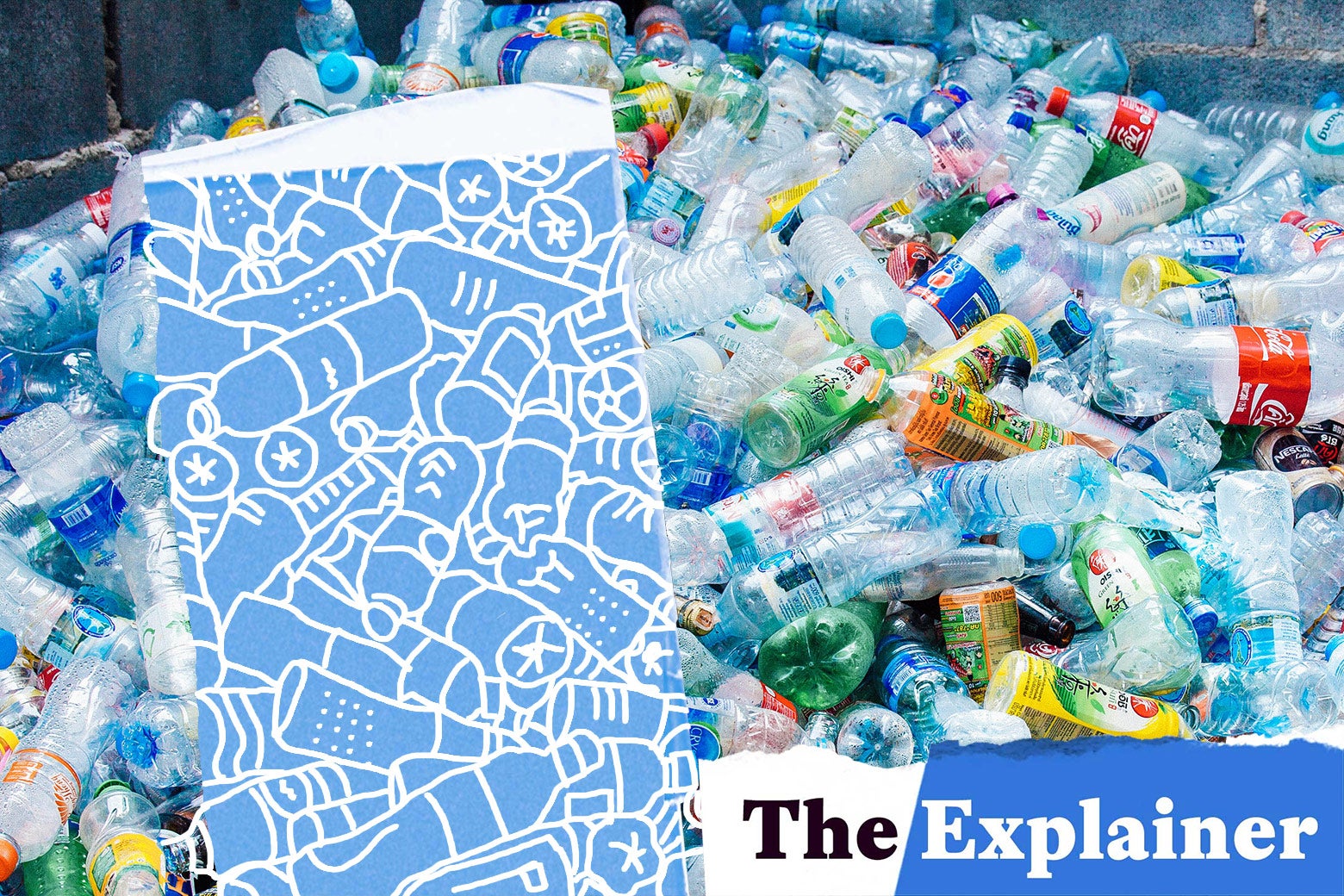On Wednesday, researchers at the University of Georgia published a study based on United Nations data that predicts the world will have 111 million metric tons of excess plastic trash by 2030 that no one currently knows where to put. That’s because China, which has imported almost half of the world’s waste plastic in the past two decades, began imposing a ban on various types of “foreign garbage” in 2018 as part of an anti-pollution campaign. Why was China importing so much used plastic in the first place?
To reuse it. China had a wealth of cheap labor that could profitably refashion scrap plastic for the manufacturing of sandals, phones, bottles, hoses, and other products. Cargo ships began importing large quantities of waste in the 1980s and 1990s, when the country was riding high on a wave of reforms that had lifted many of the government’s controls on the economy and allowed the private sector to thrive. Brokers took waste shipments from the ports to the countryside and other less economically developed areas, where small mom and pop outfits would buy the plastic and other scraps to use as raw materials for processing and manufacturing.
It was a mutually beneficial arrangement: Chinese businesses welcomed waste plastic from overseas because it was often of a higher quality than what was available domestically, and countries like the U.S. and U.K. found that it was cheaper to send their trash abroad than to sort through it at home. Waste-plastic imports boomed after China became a member of the World Trade Organization in 2001, which opened up a host of international business opportunities. China was exporting more manufactured goods than ever before on enormous container ships, and businesses saw that it was inexpensive to fill the empty space that was available on return trips with recyclable trash. This informal waste industry eventually grew to employ 3 to 5 million people.
As the country’s economic growth and standard of living have skyrocketed, the ruling Chinese Communist Party has of late been trying to steer the economy more toward high-profit industries like technology. The government now sees the waste-recycling industry as a low-profit and low-value enterprise and would prefer to direct manufacturing resources toward big conglomerates rather than mom and pop shops. The industry also produces a lot of pollution in the country’s air and water, which poses a public health risk. Pollution is a hot-button topic in China; environmental issues have become one of the leading motivators of protests in the country, sometimes drawing thousands of people.
China notified the WTO last July that it intended to ban certain kinds of trash imports, which will dramatically cut down on the amount of plastic it will accept in the future. The ban allows the government to squash the waste industry and show the population that it is taking action on pollution. Focusing on garbage imports is also politically appealing because the government can shift the blame for pollution onto foreign countries.
Explainer thanks USC History and East Asian Languages and Cultures Professor Joshua Goldstein.
